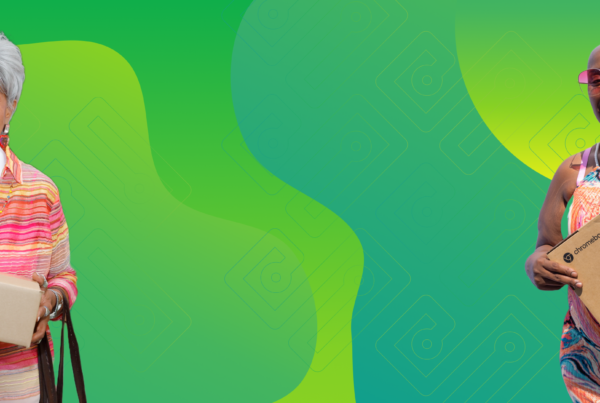By. Michael Condra
While the cost of internet access is well known, the barrier to opportunities without access presents a cost that is considerably greater. A good example to bridge this barrier is New York’s LinkNYC kiosks, which aims to connect more residents with online services, is a reminder that without access is a trap. Even more troubling is that “a 2015 study by the city comptroller’s office found that roughly 813,000 households (nearly 26 percent in NYC) lacked broadband access at home,” according to a recent article on CityLab. For millions of Americans this is an everyday issue and a barrier to opportunities and keeps them below the poverty line.
The cost of exclusion undermines a person’s quality of life, since the barrier to social services separates them from receiving monetary and non-monetary aid. For example, applying for jobs, healthcare, finding food pantries, and financial aid requires home internet service. Households that live near the poverty line mainly use smartphones to apply for social services, which limits them “with fewer options for online access at their disposal,” according to the Pew Research Center. This access is not limited to just one area of the U.S., but “in 2016, one-fifth of adults living in households earning less than $30,000 a year were “smartphone-only” internet users – meaning they owned a smartphone but did not have broadband internet at home.”
This problem is plagued even further with barriers to education and a skills training gap that is already prevalent with the digital divide. Additionally, in 2016 “46% of U.S. employers are having difficulty filling jobs,” cited by the Manpower Group. Filling those positions with the right talent may be a further indicator of the aforementioned adults (20%) lacking home broadband. Gaining access is becoming more of a necessity for online training and education to enter the workforce. The success of companies depends upon acquiring trained individuals to fill their organizations who possess the right digital skills.
The social cost of digital exclusion goes beyond internet access. It prevails in education, in the workforce, limits access to social services and stunts economic growth for urban and rural areas. The internet already fills every aspect of our lives and expanding more inclusive access will improve the standard of living for millions of people.
Learn more about the digital divide from our blog:
What Does The Post Smartphone World Mean For E-Waste?
Computer Donations Empower STEM Education
More information:






